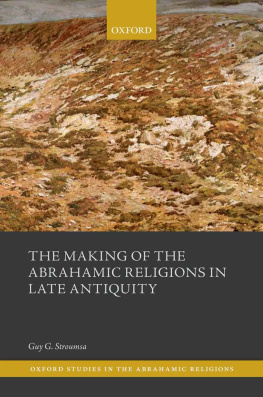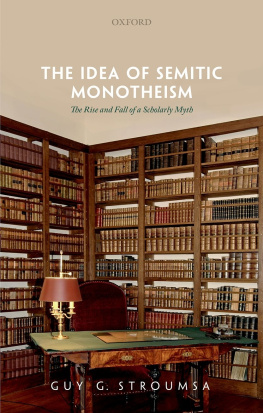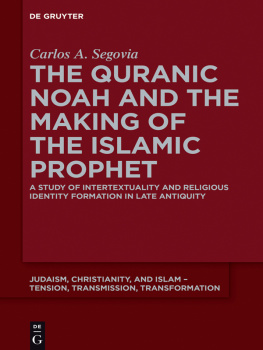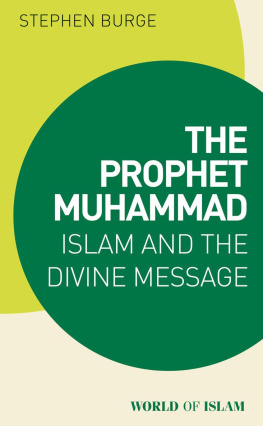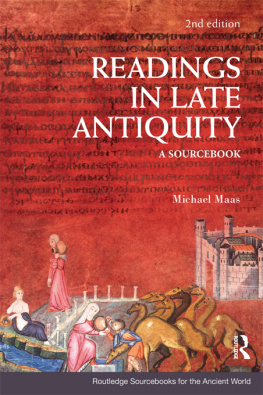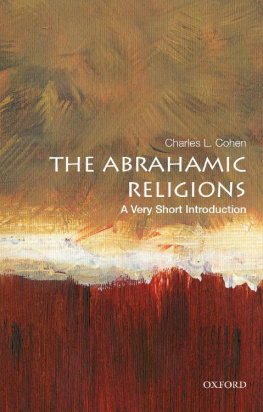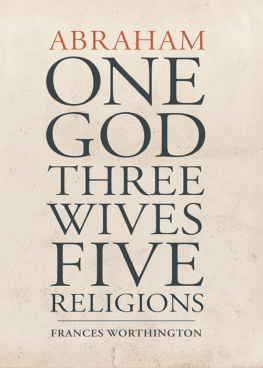This series consists of scholarly monographs and other volumes at the cutting edge of the study of Abrahamic religions. The increase in intellectual interest in the comparative approach to Judaism, Christianity, and Islam reflects the striking surge in the importance of religious traditions and patterns of thought and behavior in the twenty-first century, at the global level. While this importance is easy to detect, it remains to be identified clearly and analyzed, from a comparative perspective. Our existing scholarly apparatus is not always adequate in attempting to understand precisely the nature of similarities and differences between the monotheistic religions, and the transformations of their family resemblances in different cultural and historical contexts.
The works in the series are devoted to the study of how Abrahamic traditions mix, blend, disintegrate, rebuild, clash, and impact upon one another, usually in polemical contexts, but also, often, in odd, yet persistent ways of interaction, reflecting the symbiosis between them.
The Making of
the Abrahamic Religions
in Late Antiquity
GUY G. STROUMSA


Great Clarendon Street, Oxford, OX2 6DP, United Kingdom
Oxford University Press is a department of the University of Oxford. It furthers the University's objective of excellence in research, scholarship, and education by publishing worldwide. Oxford is a registered trade mark of Oxford University Press in the UK and in certain other countries
Guy G. Stroumsa 2015
The moral rights of the author have been asserted
First Edition published in 2015
Impression: 1
All rights reserved. No part of this publication may be reproduced, stored in a retrieval system, or transmitted, in any form or by any means, without the prior permission in writing of Oxford University Press, or as expressly permitted by law, by licence or under terms agreed with the appropriate reprographics rights organization. Enquiries concerning reproduction outside the scope of the above should be sent to the Rights Department, Oxford University Press, at the address above
You must not circulate this work in any other form and you must impose this same condition on any acquirer
Published in the United States of America by Oxford University Press 198 Madison Avenue, New York, NY 10016, United States of America
British Library Cataloguing in Publication Data
Data available
Library of Congress Control Number: 2014957582
ISBN 9780198738862
ebook ISBN 9780191059131
Printed and bound by CPI Group (UK) Ltd, Croydon, CR0 4YY
Links to third party websites are provided by Oxford in good faith and for information only. Oxford disclaims any responsibility for the materials contained in any third party website referenced in this work
For Sarah
Forty years later
Acknowledgments
The idea of this book took form during my tenure as Professor of the Study of the Abrahamic Religions at Oxford (200914). As the first holder of the chair, I sought to represent in a new light aspects of late antique religious history, on which I had been working for a few decades. It struck me that some patterns later to be identified as Abrahamic were already present during the first centuries ce , as Jews and Christians were vying for the title of the true inheritors of Abraham. The books main argument, then, is that it is in the religious history of late antiquity that we should look, if we wish to understand the genesis of Islam better.
The books ten chapters (most of them published previously in a different version) tackle different issues of this central problem. Although much has already been written on aspects of the problem, it is fair to say more work is needed before a synthetic study can be attempted. At this stage, it is important to realize that the birth of Islam must be seen as an integral part of late antiquity. Without developing a teleological approach, it is possible to analyze the trajectories of concepts and thought patterns that rendered conversion to Islam, on a large scale, possible in the seventh century and afterwards, throughout the Near East.
During the long period of gestation of this book a great number of colleagues have helped me formulate my views, in a number of ways. I am most grateful to them all, although I might not be able to mention them all. At Oxford, Moshe Blidstein, Markus Bockmuehl, Dame Averil Cameron, Beate Dignas, Mark Edwards, Martin Goodman, Neil McLynn, Sir Fergus Millar, Robert Parker, Nicolai Sinai, were my main interlocutors. Other colleagues and friends from various places, Nicole Belayche, Corrine Bonnet, Jan Bremmer, Patricia Crone, Ronnie Goldstein, Yonatan Moss, John Scheid, Shaul Shaked, and Sarah Stroumsa have discussed various aspects of the problems tackled in chapters of this book. So had the late Sabine MacCormack and Evelyne Patlagean. Thanks to their remarks, this book is probably less inadequate than it would have been.
My gratitude also goes to Rami Schwartz, who has been extremely helpful in preparing the final manuscript for the press and compiling the index, and to Donald Watt, for his precious help in reading the proofs.
Finally, I should like to honor the memory of the Saudi benefactor who endowed the Chair for the Study of the Abrahamic Religions at Oxford (and wished to remain anonymous). For him, scholarship has a role to play in the fight against religious bigotry among the children of Abraham. His vision has sustained me during dark hours of violence and hatred.
Guy G. Stroumsa
Jerusalem
August 5, 2014 (9 Ab 5775)
In this regard, I should like to mention here two important books, which appeared too late for me to discuss their findings in the present work: Aziz Al-Azmeh , The Emergence of Islam in Late Antiquity: Allh and his People (Cambridge: Cambridge University Press, 2014 ), and Garth Fowden , Before and After Muhammad: The First Millenium Refocused (Princeton, N.J. and Oxford: Princeton University Press, 2014).
Contents
The chapters of this book are derived from the following articles:
Chapter 1: The End of Sacrifice: Religious Mutations of Late Antiquity, in Empsuchoi Logoi: Festschrift Pieter van der Horst, ed. M. Misset-van der Weg, (Leiden: Brill, 2008), pp. 2946.
Chapter 3: False Prophets of Early Christianity, in Priests and Prophets among Pagans, Jews and Christians, ed. Beate Dignas, Robert Parker, and Guy G. Stroumsa (Leuven: Peeters, 2013), pp. 20829.
Chapter 4: False Prophet, False Messiah and the Religious Scene in Seventh-Century Jerusalem, in Redemption and Resistance: The Messianic Hopes of Jews and Christians in Antiquity, ed. J. Carlton Paget and M. Bockmuehl (Edinburgh: T. & T. Clark, 2007), pp. 27889.
Chapter 5: Seal of the Prophets: The Nature of a Manichaean Metaphor, Jerusalem Studies in Arabic and Islam 7 (1986), 6174.
Chapter 6: Religious Dynamics between Christians and Jews in Late Antiquity, in Cambridge History of Christianity, 300600, ed. A. M. Casiday and F. Norris (Cambridge: Cambridge University Press, 2007), pp. 15172.
Chapter 7: Gods Rule in Late Antiquity, in Theokratie und theokratischer Diskurs, ed. Kai Trampedach and Andreas Pear (Tbingen: Mohr Siebeck, 2013), pp. 197209.

